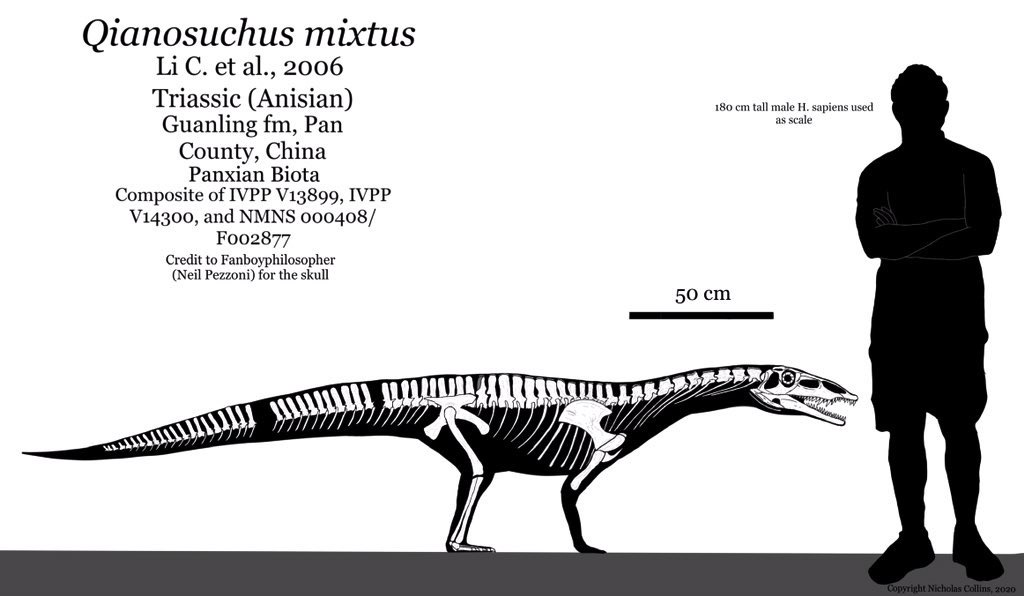|
|
Post by Supercommunist on Jun 5, 2024 0:24:23 GMT 5
How would you create heat resistant predator without giving them the ability to sweat?
I heard gular fluttering is more efficent than panting but I haven't seen studies that actually confirm that. I also know animals will enlongate or enlargen body parts to serve as radiators like the ears or neck but those body parts seem to be a detriment in a fight.
I also know air sacks help, but I wonder if there any novel ways of getting rid of excessive heat that we haven't thought about.
|
|
|
|
Post by Infinity Blade on Jun 5, 2024 1:23:10 GMT 5
How would you create heat resistant predator without giving them the ability to sweat? I heard gular fluttering is more efficent than panting but I haven't seen studies that actually confirm that. I also know animals will enlongate or enlargen body parts to serve as radiators like the ears or neck but those body parts seem to be a detriment in a fight. I also know air sacks help, but I wonder if there any novel ways of getting rid of excessive heat that we haven't thought about. Crocodilians (and theropods, it seems) have an area on the roof of their skulls where blood vessels form a circulatory system to cool the brain. I typically don't like to invoke news articles, but I think they were about right when they said that T. rex effectively had an air conditioner in its head. anatomypubs.onlinelibrary.wiley.com/doi/10.1002/ar.24218And of course, since theropods and crocodilians are reptiles, they can't/didn't sweat. |
|
|
|
Post by Supercommunist on Jun 5, 2024 1:52:15 GMT 5
I have heard of that adaptation. Wonder how it compares to sweating and panting.
I know vultures and some other birds will urinate on their legs to cool down. Maybe a hypothetical land squid/octopus could repurpose its ink glands and use it to cool themsleves down.
I just found out that some species of geckos can squirt out nasty liquids out of their tails in self-defense. I guess it might be possible for a scaled animal to have a similar adaptation but used it to squirt water on itself rather than use it defensively.
|
|
|
|
Post by Supercommunist on Jul 13, 2024 2:15:17 GMT 5
Personally I think qianosuchus had a body plan that aligns best with semi aquatic predator descriptor as it does seem to be both a competent land and water predator. The erect legs would be useful for chasing down prey on land and doesn't need to be stubby or webbed because the powerful tail helps propel it through the water.  Minks are probably the only modern vertebrate I can think of that are equally good at hunting in water and land. Rakali's might also count but they are understudied so it is hard to say. I know crocodilians and sea lions can also hunt on land but they are not super great at it. Polar bears and jaguars can catch aquatic prey underwater but they need the element of surprise and there is little chance they can catch a seal or a caiman if that first burst fails. |
|
|
|
Post by Infinity Blade on Jul 13, 2024 5:06:11 GMT 5
Personally I think qianosuchus had a body plan that aligns best with semi aquatic predator descriptor as it does seem to be is both a competent land and water predator. The erect legs would be useful for chasing down prey on land and doesn't need to be stubby or webbed because the powerful tail helps propel it through the water.  Minks are probably the only modern vertebrate I can think of that are equally good at hunting in water and land. Rakali's might also count but they are understudied so it is hard to say. I know crocodilians and sea lions can also hunt on land but they are not super great at it. Polar bears and jaguars can catch aquatic prey underwater but they need the element of surprise and there is little chance they can catch a seal or a caiman if that first burst fails. I haven’t even heard of this thing before but it’s already the coolest thing ever. And it had ziphodont teeth? I hereby declare this animal to be peak. |
|
|
|
Post by Supercommunist on Jul 13, 2024 6:35:55 GMT 5
Personally I think qianosuchus had a body plan that aligns best with semi aquatic predator descriptor as it does seem to be is both a competent land and water predator. The erect legs would be useful for chasing down prey on land and doesn't need to be stubby or webbed because the powerful tail helps propel it through the water.  Minks are probably the only modern vertebrate I can think of that are equally good at hunting in water and land. Rakali's might also count but they are understudied so it is hard to say. I know crocodilians and sea lions can also hunt on land but they are not super great at it. Polar bears and jaguars can catch aquatic prey underwater but they need the element of surprise and there is little chance they can catch a seal or a caiman if that first burst fails. I haven’t even heard of this thing before but it’s already the coolest thing ever. And it had ziphodont teeth? I hereby declare this animal to be peak. I think this is the first time I knew a species before you did. |
|